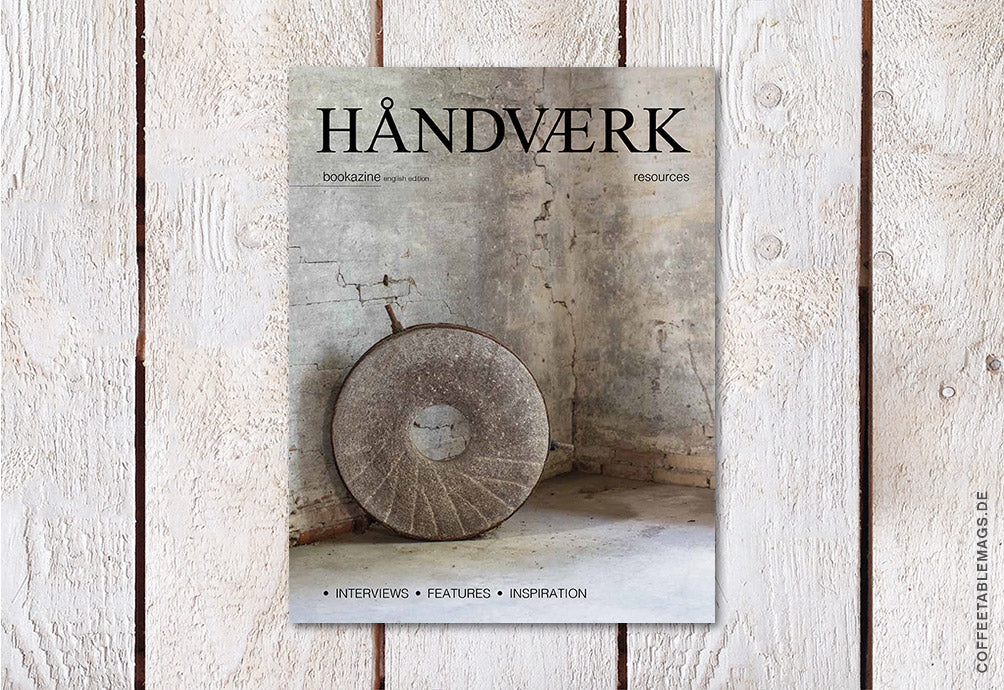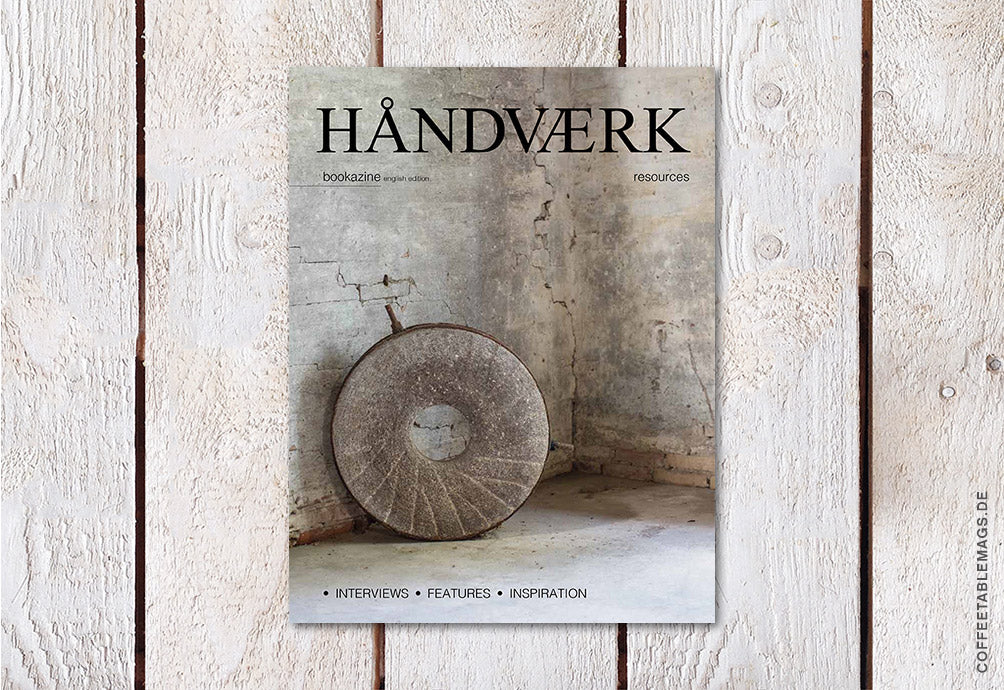HÅNDVÆRK Bookazine – Number 06: Resources
Couldn't load pickup availability
Craft, craftmanship, makersmovement, artsandcrafts by Rigetta Klint
HÅNDVÆRK takes you behind the scene of crafts, artisanal production, architecture and design in respectful and in-depth interviews accompanied by beautiful photographs and complemented by top-quality printing and paper.
‘The theme of this issue of HÅNDVÆRK bookazine is resources – under the same overarching theme of craft and design as the five previous issues. More specifically, the focus of this issue is on the conditions and resources involved in the making of artisanal and craft products and design objects.
This includes human resources and all the things we can achieve if we try, the shoulders we are standing on and the natural resources we rely on.
Many years ago, when I was working as a fashion designer, we called natural resources ‘materials’.
Materials were natural resources combined with energy and manpower.
In my case, the materials were consistently top quality and thus durable and worth the effort. However, that does not change the fact that my point of view was product durability in relation to the retail price – not in relation to the price the planet paid for the production.
After changing my perspective and talking about resources instead of materials, I find that my own attitude about virtually all forms of consumption is changing; I am developing a deeper awareness.
This awareness of the resources required to make a given product reminds me to ask myself whether it is really worth it!
Maybe you would like to join me in that exercise: changing your perspective to see what happens?
Another aspect is the notion of time as a resource. Time is a scarce resource; that was the explanation used years ago to justify why products that showed the traces of the manual process – and thus, the traces of the time that had gone into the making – were the new luxury, a status symbol.
Johannes Haandsbæk Vestergård, the director of the experience centre Kornets Hus (House of Grain), explains on page 93 that he finds grain interesting because it is a simple commodity that can be upgraded significantly through the addition of cultural practices. The same is true of milk, which can be turned into cheese, andgrapes, which can be transformed into wine. In these processes, time is a resource that accounts for a significant share of the value of the finished product, but another key resource is experience that is handed down, often in practice communities.
Denmark has a generous education system, and while learning in practice communities is a matter of networking, formal training is free. Students in Denmark even receive financial aid. The island of Bornholm is home to a department of the Royal Danish Academy where students can become glass or ceramics designers by investing three and a half years of their life. You can read about my visit to the school on page 122.
Take up my challenge, read the resource-themed articles in HÅNDVÆRK bookazine no. 6.
Or you can simply read or flip through the pages to find entertainment and inspiration. Best of all: one thing does not preclude the other!’
Topics: crafts and design
Contents: interviews, feature articles, inspiration
Format: biannual bookazine
Languages: English
Size: 215 x 280 mm (softback) 160 pages
Paper: 150 g
HÅNDVÆRK bookazine is an independent publication with an associated digital platform.
HÅNDVÆRK believes that the nearest shortcut to a sustainable and durable practice goes through knowledge of and respect for materials and craftsmanship.
HÅNDVÆRK bookazine promotes the living, changing practice of arts and crafts.
HÅNDVÆRK is about food, fashion and interiors – but most of all, it is about people.
Share


